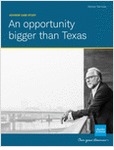Auto-enrollment in retirement plans has become increasingly common in recent years. Starting with the 2025 tax year, the Setting Every Community Up for Retirement Enhancement (Secure) 2.0 Act will require employers who establish new 401(k) or 403(b) plans to automatically enroll their employees in those new savings plans.
The minimum auto-enrollment contribution rate will range from 3% to 10%. Each year, the minimum contribution rate will increase by 1% until the rate reaches 15%. Under the law, small businesses with 10 or fewer employees and new businesses will be exempt from the auto-enrollment requirement.
We asked two professors and authors of ALM’s Tax Facts with opposing political viewpoints to share their opinions about the advisability of making auto-enrollment in retirement plans mandatory.
Below is a summary of the debate that ensued between the two professors.
Their Votes:
 Bloink
Bloink
 Byrnes
Byrnes
Their Reasons:
Bloink: Automatic enrollment in an employer-sponsored retirement plan has been proven effective. Employees always have the option of opting out of auto-enrollment. However, most employees elect to continue saving. On the flip side, when merely given the option to enroll (or not enroll) in a retirement savings plan, many employees don’t participate in the plan for one reason or another — leading to a situation where those employees may not have the retirement savings they need for the future.
Byrnes: Yes, automatic enrollment features have been shown to increase participation in retirement savings plans, especially among lower-income taxpayers. On the other hand, however, studies have now found that these auto-enrollment features can be much more costly to administer. Those costs tend to weigh most heavily on the small-business owners whom we want to encourage to offer retirement plans in the first place. Those employers shouldn’t be forced to bear the burden of a mandatory auto-enroll policy.








 June 15, 2023 at 01:56 PM
June 15, 2023 at 01:56 PM












 Copyright © 2024 ALM Global, LLC. All Rights Reserved.
Copyright © 2024 ALM Global, LLC. All Rights Reserved.